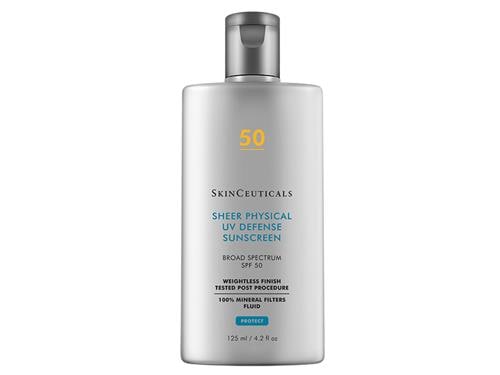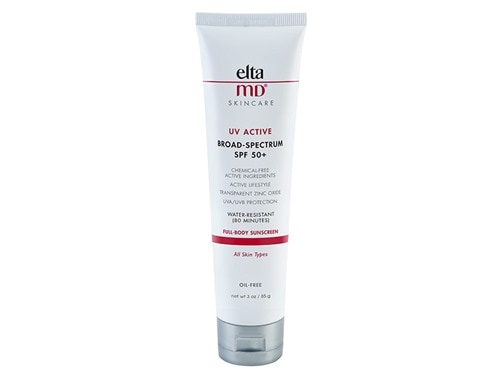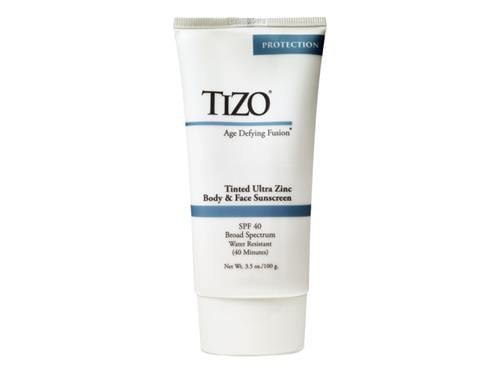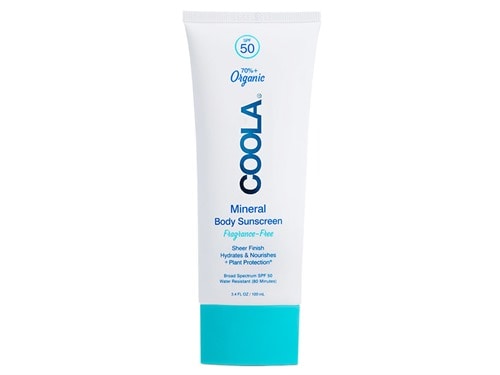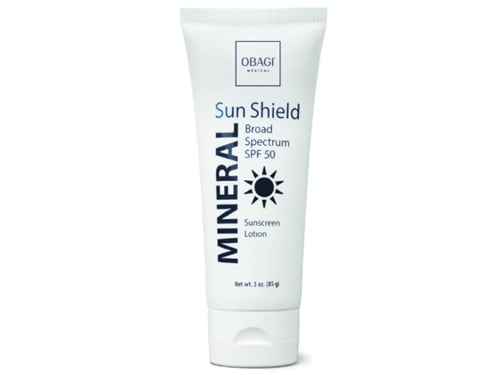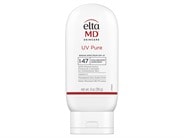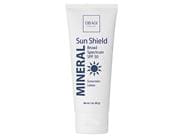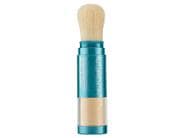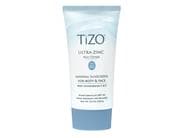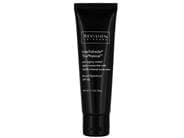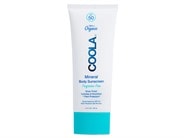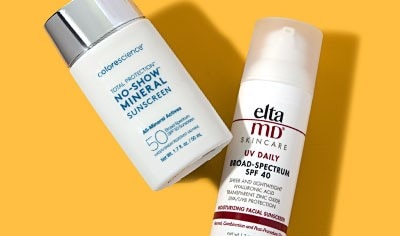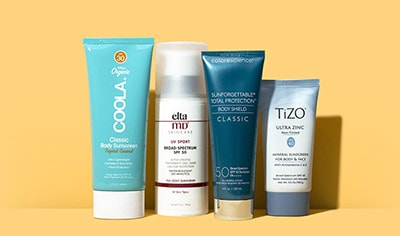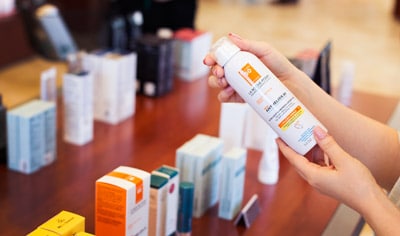
When it comes to skin care, it’s hard to play favorites. However, having a reliable, effective sunscreen in your routine is arguably the most important thing you can do to protect the health of your skin. Sunscreen can help prevent skin cancer as well as premature aging of the skin, which can result in skin discoloration, fine lines and wrinkles—which is why board-certified dermatologist and LovelySkin CEO Dr. Joel Schlessinger recommends the daily use of broad-spectrum sunscreen of SPF 30 or higher all year round.
But, exactly what type of sunscreen should you be applying? Mineral sunscreen is one choice to consider. To help you decide if it’s the right fit for you, we’ll answer some key questions, including:
What is mineral sunscreen?
There are two types of sunscreens: chemical sunscreens and physical sunscreens. Chemical sunscreens contain ingredients that are designed to absorb the sun’s rays, while physical sunscreens work by deflecting the sun’s rays. Mineral sunscreen is another name for physical sunscreen, as the two most popular active ingredients in physical sunscreens are the minerals, titanium dioxide and zinc oxide. There are also sunscreen formulas out there that feature a blend of these two types, containing both mineral and chemical blockers. In fact, one of Dr. Schlessinger’s all-time favorite face sunscreens, EltaMD UV Clear, is a prime example of a chemical and mineral sunscreen hybrid.
Does mineral sunscreen work?
Yes! Mineral sunscreens, especially those with an SPF of 30 or higher, provide broad-spectrum sun protection—that is, protection against both UVA and UVB rays. “To get the most effective protection when wearing an all-mineral sunscreen, be sure to reapply according to the label’s recommendation—usually every two hours, more frequently if you’ve been in the water,” Dr. Schlessinger says. “It may take a little more work to get the full protective effect of a mineral-based sunscreen, but if you have allergies or want to avoid chemicals, there is no better option out there.”
Is mineral sunscreen better for sensitive skin?
Mineral sunscreens may not always be the best option for sensitive skin types, but in some cases, they could be. “If you have sensitive skin, it may be a better option to start out with a mineral-based sunscreen, but also consider trying out a good, chemical sunscreen such as an EltaMD sunscreen or SkinCeuticals sunscreen, as they are made to different specifications than over-the-counter drugstore brands,” Dr. Schlessinger says. “Basically, I wouldn’t rule out chemical sunscreens entirely because you may be able to wear them comfortably. However, if you have noticed skin irritation as a result of chemical sunscreen ingredients in the past, trying a mineral-only sunscreen is a great choice.” Dr. Schlessinger also recommends a mineral sunscreen for children and those who are pregnant or nursing.
Is mineral sunscreen good for ocean swimming?
Yes, mineral sunscreen is the preferred choice for swimming in the ocean. Some active ingredients in chemical sunscreens—including oxybenzone, octocrylene and octinoxate—may be damaging to coral reefs and other marine life, according to the National Ocean Service. This is why you might find that some states, like Hawaii, have passed laws prohibiting the use and sale of sunscreens containing these ingredients. Mineral sunscreens are considered reef-safe because they do not contain oxybenzone, octocrylene or octinoxate. “To be fair, we’re still not sure if chemical sunscreen is truly the cause of reef damage, but I personally use only mineral sunscreen if I am going to the ocean, as it is 100% reef-safe sun protection,” Dr. Schlessinger says.
Are there any disadvantages to using mineral sunscreen?
Mineral sunscreens with zinc oxide and titanium dioxide are somewhat notorious for having a heavy texture and leaving a white cast on the skin, which may have been a turnoff if you’ve experienced this before. “However, mineral sunscreens have come a long way from the chalky formulas of the past,” Dr. Schlessinger says. “There are so many options out there that are more enjoyable to wear and leave less of a noticeable cast on the skin.” There are also some cases where you can look past that white cast—and that includes mineral sunscreens like EltaMD Pure. “This is an example of a mineral sunscreen that is so effective and perfect for kids that we tolerate the whiteness and difficulty of working them in. It takes a while to get it to sink in, but it is one of the safest sunscreen choices out there for kids and those who are pregnant.”
8 mineral sunscreens to try this summer
Are you ready to give mineral sunscreens a try? Here are eight dermatologist-recommended mineral sunscreen options for both face and body that work to help keep you safe in the sun.
Feather-light fluid mineral sunscreens
La Roche-Posay Anthelios 50 Mineral Tinted Ultra Light Sunscreen Fluid SPF 50
If lightweight texture is important to you when it comes to sunscreen, consider this unique formula from La Roche-Posay Sun Care. Rather than a traditional cream or lotion texture, it features a milk-like consistency that soaks into skin quickly and dries to a matte finish. As a mineral sunscreen, this formula contains titanium dioxide with a universal tint—though it comes in an untinted version as well. “This sunscreen’s small, flat bottle makes it very convenient for travel,” Dr. Schlessinger says. “When I went on a trip to climb Mt. Kilimanjaro—where I was concerned not only with UVA and UVB rays, but also even more powerful UVC rays, which exist only above the cloud line—this was the only sunscreen I took. Just make sure to shake it before applying to ensure that the liquid formula is well-mixed.”
SkinCeuticals Sheer Physical UV Defense Mineral Sunscreen SPF 50
With a lightweight fluid texture, this mineral sunscreen for your face has a barely-there feel that layers well under makeup. Zinc oxide and titanium oxide combine to provide broad-spectrum sun protection, while artemia salina—a plankton extract—helps protect skin against UV damage. Because this formula is water-resistant for up to forty minutes, it’s a great mineral sunscreen to wear in the pool or on the beach.
Full-body mineral sunscreens
EltaMD UV Active Broad-Spectrum SPF 50+
Seeking a sunscreen you can use on both face and body for everyone in the family? This mineral body sunscreen from EltaMD features a traditional cream texture with a long-lasting formula that’s sweat- and water-resistant for up to eighty minutes, and it can also be used on both adults and children alike. Jojoba esters help give this formula its water-resistant ability, while also delivering a skin-loving boost of hydration. Simultaneously, zinc oxide and titanium oxide provide users with SPF 50 protection.
TiZO Ultra Zinc Body & Face Mineral Sunscreen SPF 40
With SPF 50 protection from zinc oxide, TiZO sunscreen lotion can be used on both the body and face and is gentle enough for even sensitive skin types. This formula is easy to apply smoothly without leaving a white case behind. It’s also available in tinted and untinted versions. The addition of vitamin C and E provides antioxidant protection for your skin as well, helping guard against environmental damage.
COOLA Mineral Body Sunscreen SPF 50
Looking for a high-performing mineral body sunscreen without the beachy scent that so many formulas have? This fragrance-free mineral body sunscreen made with 70% organic ingredients is a fantastic option if you’re irritated by fragrance or just prefer a no-scent sunscreen. A combination of zinc oxide and titanium dioxide provide broad-spectrum SPF 50 protection and water resistance for up to eighty minutes. As an earth-friendly bonus, this mineral sunscreen is packaged in a plant-based tube that’s sourced from sugar cane rather than traditional plastic.
Mineral face sunscreens with added skin benefits
Revision Skincare Intellishade TruPhysical SPF 45
This mineral sunscreen for the face is actually more like three products in one, functioning as a tinted moisturizer, broad-spectrum sunscreen and anti-aging treatment with just a single application. Zinc oxide and titanium oxide serve as physical sunscreen blockers while a tinted formula completed with light-diffusing particles helps blur imperfections for a flawless look. A blend of bio-peptides helps reduce the appearance of fine lines and wrinkles while white birch and plankton extracts help skin appear brighter and more radiant.
Obagi Sun Shield Mineral Broad Spectrum SPF 50
In addition to providing broad-spectrum SPF 50 sun protection with zinc oxide and titanium oxide, this mineral sunscreen for the face also helps protect your skin from infrared rays, blue light and HEV light. The traditional lotion-like formula has a lightweight feel and layers well under makeup. It’s also dermatologist-tested and non-comedogenic, meaning it won’t block pores or aggravate acne-prone skin.
On-the-go mineral sunscreen powder
Colorescience Sunforgettable Total Protection Brush-On Shield SPF 50
Stash this powdered mineral sunscreen in your bag for easy application on the go. Because it’s dispensed from a unique brush applicator, it’s so convenient to reapply your sunscreen whenever wherever, including throughout the day when you’ve already applied your makeup. The formula consists of two mineral sunscreens—zinc oxide and titanium dioxide—mixed into a translucent powder that you can dust onto your face, neck, ears and even exposed parts of your scalp, like your hair part.
Have you always wondered whether to apply your sunscreen or moisturizer first? Learn how to layer your skin care products for the most effective results and more at the LovelySkin Blog.
Shop this blog
Follow us on social
Follow us on social networks and be one of the first to learn about sales, giveaways, and free samples


